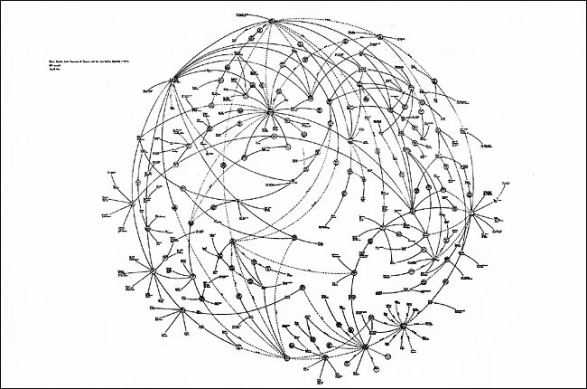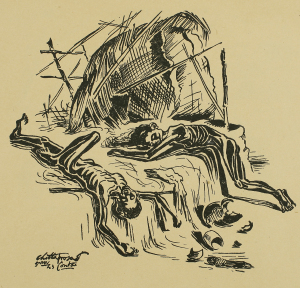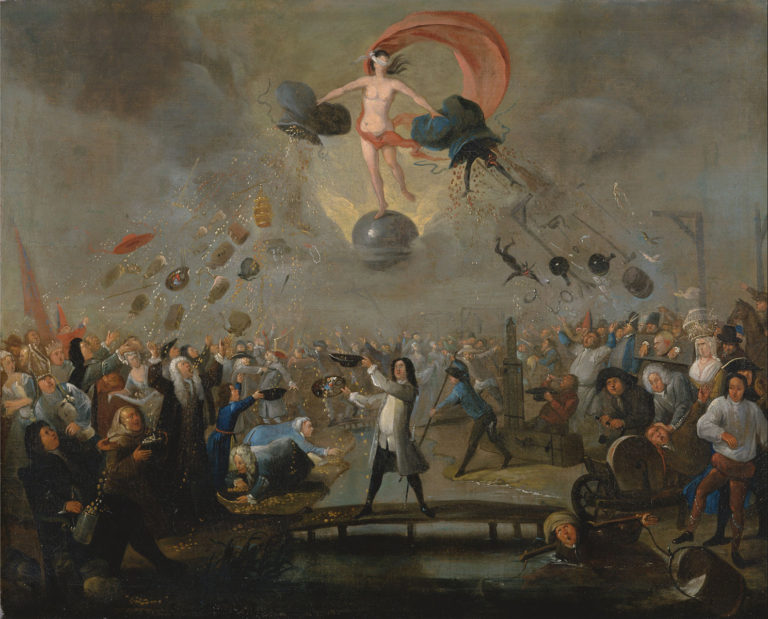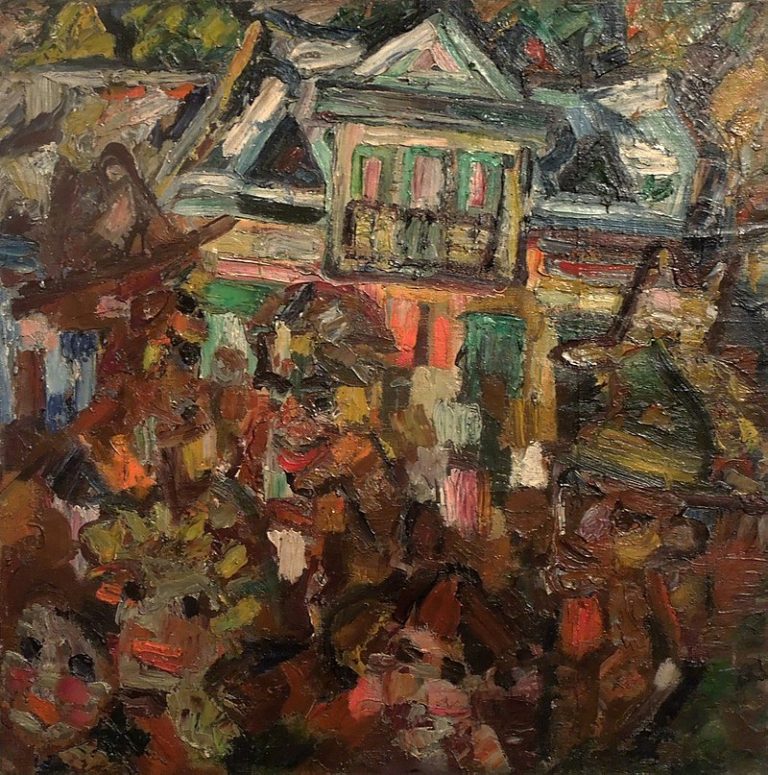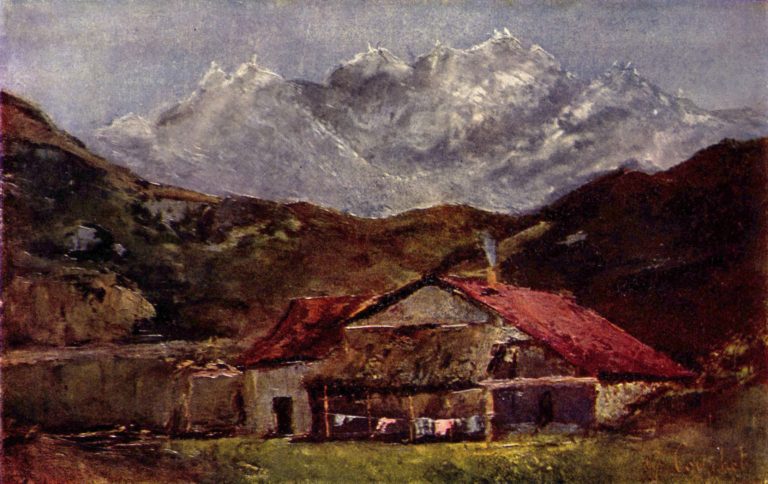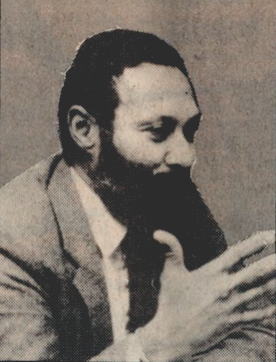This introduction discusses the importance of open access scholarship and its relation to the academy. The introduction provides an overview of the articles in the journal, which include responses to the forum on universal basic income (UBI) published in issue 7.2. Finally, this issue marks the beginning of the Years in Cultural Studies project.
Issue 8.1 (Spring 2019)
Context and Organization: Situating Antonio Negri’s Factory of Strategy in the Contemporary Debate on the Party Form
This paper begins by observing a tension in contemporary political discourse on the left: against a backdrop of social movements that prioritize “horizontal” organizational structures, there has been a renewed academic debate on the relevance of Lenin and the party form. In this paper I look at Antonio Negri’s recently translated Factory of Strategy: Thirty-Three Lessons on Lenin (a work based on a collection of lectures originally delivered by Negri in the 1970s). I suggest that Negri’s intervention can make a significant contribution to this debate, one that—without rejecting the Leninist project as such—reframes what it would mean to appropriate Lenin for today. By focusing on Lenin’s method of political analysis rather than his specific form of organization, I argue that Negri recovers from within Lenin’s writing a set of categories that can themselves provide the terms for a critique of contemporary Leninism. For Negri, this entails showing how Lenin’s system contains the means by which to theorize its own supersession. In presenting a theory of political intervention that is able to reflexively analyze its historical conditions of possibility, I suggest that Negri’s work on Lenin embodies several important theoretical and methodological commitments. This paper’s concluding section looks at recent work by Jodi Dean and critically interprets her endorsement of the party form in light of Negri’s intervention.
The Rationalization of Leisure: Marxist Feminism and the Fantasy of Machine Subordination
Critical analyses of domestic technological culture have emphasized the impact of domestic technologies on intensifying women’s labor and reinforcing its privatization within the home, all the while being marketed as laborsaving devices. Drawing from the ways the marketing of domestic technologies framed the home as a space in need of technological administration, this article offers a Marxist feminist analysis of online surveillance during leisure time, examining how the marketing of technologies for both domestic labor and online leisure helps produce relationships between subjects and technologies that double as vehicles for capital accumulation. The article argues that we should look to the history of domestic technological design to understand the ways online surveillance and data collection are used to produce revenue and impact consumer behavior, given that both domestic technologies and contemporary information technologies work to rationalize non-waged time. The article begins with the Taylorization of the home popularized in 1912, followed by the rise of domestic technologies in the 1950s, in order to demonstrate how the ideological framing of the home as a space in need of rationalization informs the marketing of today’s personalization technologies. The marketing of personalization technologies reproduces the racialized and gendered logic of machine subordination that framed domestic technologies for the home in the 20th century. The article concludes with a discussion of how Marxist feminism is a useful theoretical framework for understanding and developing a political response to online data collection, given that both the domestic sphere and online leisure time are traditionally understood to be outside the workday, and therefore supposedly outside the scope of capitalist workplace relations of surveillance and exploitation.
Sex Work and Social Media: Policy, Identity, and Privacy in Networked Publics and Counterpublics
Using the online practices of sex workers as a focal point, this project examines how the public/private dichotomy is governed and complicated within Social Networking Sites (SNS). It concentrates in particular on Facebook and FetLife, arguing that the former functions as a normative public and the latter as a counterpublic due, in part, to the differing regulations each site implements regarding sex work. The project centers on a qualitative study of the rhetorical strategies online sex workers use to self-identify and self-advocate, as well as the tactics they employ to maintain privacy and avoid the phenomenon of “context collapse.” Through the results of this study, I discuss the theoretical and practical implications of end user cyber security tactics, considering the scholarship on digital surveillance and privacy. In addressing these strategies, it underscores the importance of privacy specifically for vulnerable populations of digital publics.
When Shock is No Longer Shocking: The Role of Seduction in Revitalizing Benjamin’s Dialectical Image Under Late-Capitalist Conditions
Walter Benjamin’s conception of the dialectical image provided a strong foundation for the development of political art during the first half of the twentieth century. However, with the rise of late capitalism and its attendant reorganization of our experience of shock, culture, and history itself, the concept must be reevaluated. This is so not least because, whereas Benjamin operated on the presumption that shock had a kind of self-evident revelatory power, we now occupy a field in which shock is no longer shocking. Through a reconsideration of the contributions made by artists Mark Lombardi and Cindy Sherman, I show how Benjamin’s concept might be saved by strategies of epistemological seduction that operate, not as substitutes for shock, but as a concrete strategy for revitalizing our capacity to experience it.
Aestheticizing the City Through Storytelling and Walking: Dublin’s 1916 Rebellion Walking Tour
The main concern of this article is situated in the theatrical experience of the 1916 rebellion walking tour as a broader mode of aestheticizing performance, focusing on the ways it traces the process of the tour to ask what the appeal is for international tourists in experiencing often tragic historical events through the use of performative strategies, namely, acts of walking and storytelling. By employing Walter Benjamin’s notion of storytelling and Michel de Certeau’s approach to the walking, this article intends to explore how the 1916 walking tour as a cultural practice rearranges and recreates the Dublin landscape, and how these new meanings are constituted aesthetically beyond their entertainment value. Furthermore, by placing this tour as performative genre, this article investigates how this historic event is embodied by the guide, perceived and transformed by tour groups, thereby creating tourists’ kinesthetic empathy during the tour, by way of the guide’s storytelling with their walking. In doing so, this article will offer a broader context of staging this historical memory that commemorates past events by way of physical engagement with this tour.
Disruptions—An interview with Jacques Rancière
This interview concerns the premise of ‘aesthetics’, as a certain regime of identification, which intervenes within the domain of ‘politics’ and ‘history of art’, as configured in the ideations of Jacques Rancière. From this general premise the discussion provokes us to particularly re-configure the concept of ‘modernism’ in art that is not solely defined through simplistic comparisons with ‘post-modernism’. Instead, a re-configuration of ‘modernism’ lets us reconsider the ‘Avant Garde’ project from the methodology of an ‘aesthetic community’ formulated during the French revolution existing still in the texts of the young Marx of the 1840s. The logic of representations in art moves beyond the objective structures of ‘Dialectical Reason’, and instead gets aligned to the aesthetic logic of being spatio-temporally ‘surplus’. Furthermore, it is the aesthetic logic that introduces the heterogeneity of political symbolizations that underlines a multiplicity of process as against a distinct strategy linking theory and practice thus even challenging a global rationality of defining ‘what is art?’ (Art History) and ‘what is politics?’ (Politics). It is based upon these contingent reversals of the signification of the world, of trying to identify the singular points of disruptions connecting to or not connecting to make a whole, that the interview concludes with questions on the multiplicity of possibles.
Forum: Universal Basic Income
Historicizing Basic Income: Response to David Zeglen
This piece argues that Basic Income is, and has never been, a simple “common sense” or “spontaneous” idea for those who want to struggle against poverty. In fact, it but the product of a profound shift in how we thought about the social question since the late 19th century. A shift that, by the mid-sixties, made cash transfers and the price system the main tool when thinking about redistribution against collective provision or more state-centered approaches.
Response to Lindsey Macdonald’s “We are All Housewives: Universal Basic Income as Wages for Housework”
What types of subjectivities and political actors are emerging around calls for UBI? Lindsey Macdonald’s article, “We Are All Housewives,” eloquently speaks to the concept of universality, while also situating socialist-feminist demands for UBI within specific activist traditions. I pose questions about the distinctions between different socialist arguments for UBI and the political groups that advocate for its implementation: first, what are the differences between autonomist and feminist proposals; and, second, how might we distinguish and evaluate organizations that are fighting for a feminist-socialist UBI?
Naturally Radical? A Response to Kimberly Klinger’s “Species-Beings in Crisis: UBI and the Nature of Work”
In this response to Kimberly Klinger’s “Species-Being in Crisis: UBI and the Nature of Work,” John Carl Baker ties Klinger’s analysis to past Marxist debates about human nature and contemporary appeals to human nature by a resurgent US left. While sympathetic to the idea that UBI speaks to a human desire for free productive activity, he critiques the notion that UBI necessarily illuminates the exploitative wage relations of capitalism. Baker proposes that regardless of the validity of Marxist conceptions of human nature, it is the materialist analysis of social relations that must take primacy in any examination of UBI or similar left policy prescriptions.
Response to Caroline West’s “From Company Town to Post-Industrial: Inquiry on the Redistribution of Space and Capital with a Universal Basic Income”
This reply critically analyzes the concept of “solidarity” in Caroline West’s account of the role that a Universal Basic Income (UBI) could play in Central Appalachian re-development. I argue that a robust structural form of “solidarity” would necessarily play an essential role in formulating a political bloc capable of implementing an ambitious project like a UBI. In addition to this implicit role of a structural form of solidarity that can connect various communities and constituencies together into a powerful political bloc, Caroline West also articulates an important role for highly local forms of community and solidarity in this region’s transformation. Given the two distinct ways that “solidarity” functions in her account, I raise questions about how the formal features of a UBI relate to both its local and more structural forms.
Years in Cultural Studies
Introduction: Years in Cultural Studies
This special section is another iteration of cultural studies telling its own story. In our particular iteration, we offer here essays focused on specific years in the history of cultural studies. Our aim is to provide a pedagogical resource, a place for documentation and excavation, and a forum for more storytelling.
1983—Stuart Hall Visits Australia and North America
Throughout 1983 Cultural Studies continued to spread outside the United Kingdom, spurred by Stuart Hall’s tour of Australia and parts of the United States where he presented lectures connecting current ideas of what it means to study culture in often disparate and intense political climates across the globe. Myriad publications published in 1983 provide insight into how Cultural Studies circulated among scholars in varying disciplines while still in its infancy. This article situates Cultural Studies primarily within a North American context focusing on the pivotal event of the year: the teaching institute held prior to the 1983 conference at the University of Illinois where Hall delivered what would be eight influential lectures in the field of Cultural Studies. Further, I provide insight into an understudied conference held in Australia where Hall’s impact led to the birth of an Australian Cultural Studies journal. Finally, I provide an overview of some of the pivotal publications of the year, connecting ideas of hegemony, power and dominance, reflexivity and Marxism within a western context.




